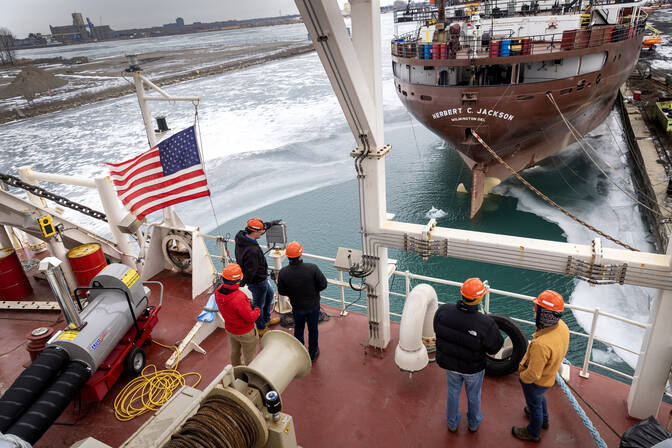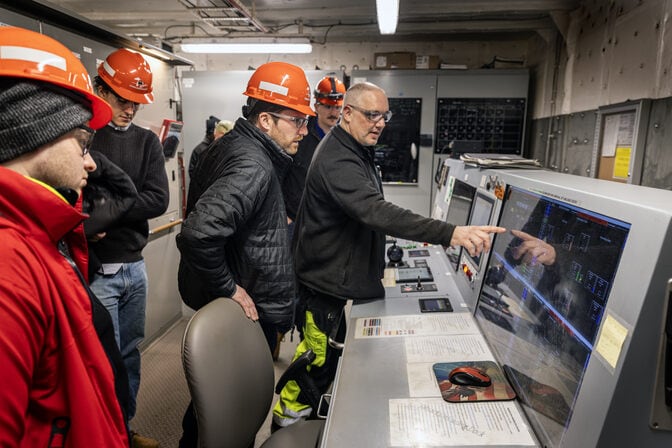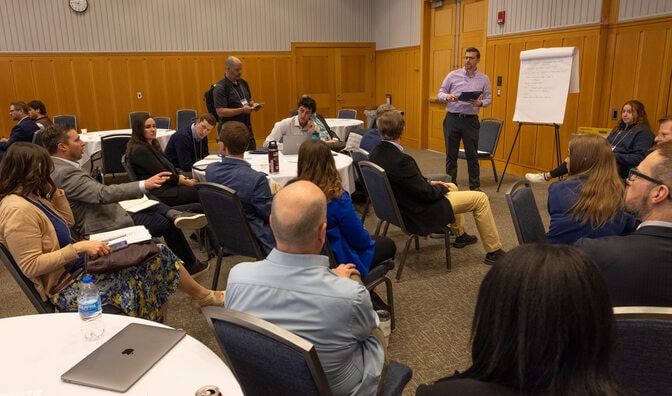
US shipbuilding needs rescuing: U-M programs offer a life preserver
Michigan works with local and international partners to re-establish the U.S. as a strong, shipbuilding nation.

Michigan works with local and international partners to re-establish the U.S. as a strong, shipbuilding nation.
Experts
As the White House looks to shore up U.S. shipbuilding, the University of Michigan is leading efforts to train the needed workforce and develop a state-wide maritime strategy with one of the nation’s few departments dedicated to naval architecture and marine engineering.
The Trump administration recently announced a new White House Office of Shipbuilding that aims to reinvigorate America’s commercial and military shipbuilding industry. The new office complements similar efforts from Congress, which introduced the bipartisan Shipbuilding and Harbor Infrastructure for Prosperity and Security for America Act (a.k.a. the SHIPS for America Act) last session in late 2024. The bill is expected to be reintroduced in the latest session.
To meet the nation’s new shipbuilding goals, U.S. shipyards will need more hands on deck.

Explore more shipbuilding and maritime innovations from Michigan Engineering
“Shipping manufacturers and the associated industry will need to hire at least 100,000 people over the next 10 years, according to conservative estimates,” said Jonathan Page, a professor of engineering practice in naval architecture and marine engineering. “We are one of only ten American institutions accredited to offer naval architecture and marine engineering degrees, so it’s on us to step-up and make sure the country has the engineers it needs to rebuild its fleet.”
U-M has played a pivotal role in shipbuilding research and workforce development since its department of naval architecture and marine engineering was established by Congress more than 140 years ago. As the nation’s only R1 naval architecture department with programs that span undergraduate to Ph.D., it has graduated more than 1,800 students over the past 34 years, including more than 800 doctoral students.

Four of the Navy’s last five chief naval architects are counted among the ranks of U-M naval architecture alumni. Its cadre of over 20 active and emeritus faculty have helped design nearly every U.S. Navy ship over the last twenty years and some of the world’s largest cruise ships. The department’s unique Marine Hydrodynamics Lab helped develop the cost-saving bulbous bow, which makes nearly every large, ocean-going ship 25% more fuel efficient.
Today, U-M is doing its part by expanding collaborations to share expertise and learn from other nations. An educational partnership with South Korea, which ranks second in global shipbuilding behind China, will establish a specialized exchange program for students, professors and engineers from U-M, Hyundai Heavy Industries and Seoul National University to learn from one another.

The U.S. government’s urgency to bolster the nation’s shipbuilding comes from a desire to match leading and emerging maritime nations such as China. Today, the U.S. owns fewer than 300 ocean-going, shipping vessels while China owns over 5,000, according to the United Nations Trade and Development Data Hub. China produces half of all the world’s new merchant ship tonnage. American shipyards produce less than 1% of the world’s ships. Most of those ships are relatively small domestic shipping vessels built to satisfy the Jones Act, which requires that all goods move between U.S. ports on American-made ships.
“I think it is critical to have U.S.-owned, crewed and built vessels as a matter of long-term strength to our economic and military security,” said Brendan O’ Connor, the COO of Interlake Maritime Services, a maritime shipping company that operates in the Great Lakes. The company recently launched the first commercial vessel to be built on the Great Lakes in more than 40 years—the M/V Mark W. Barker. But O’ Connor mentioned that American ships can have higher price tags.

In an effort to make U.S. shipyards more competitive, the White House announced that the new Office of Shipbuilding will create a maritime action plan over the next six months. The plan already includes an analysis of the Chinese shipbuilding industry, a maritime trust fund to support shipbuilding programs, additional taxes on foreign cargo, as well as tax incentives on shipyard investments, according to the U.S. Naval Institute News. The Trump administration has also imposed extra fees on China-made ships docking in the U.S.
Meanwhile, Congress’s SHIPS for America Act could set new shipbuilding quotas—the current iteration of the bill calls for 250 new vessels in ten years. To support the quotas, the act proposes new regulations requiring all government-funded cargo and a portion of China-bound exports to travel on American-made ships. It also calls for financial incentives and a new Maritime Innovation Center to develop new technologies that could put American ships ahead of the curve.
Even with new financial incentives and regulations, it will be difficult for the U.S. to catch up to China’s shipbuilding capacity without skilled workers. Based on hiring estimates and data from the U.S. Bureau of Labor Statistics, American shipyards could be missing almost half of the necessary shipbuilding workforce, which has declined since the 1980s. U-M’s latest programs with naval and international partners will help ensure the country has the engineers needed to meet the demand, and that they can have a future in Michigan too.

“To meet the future demands of this revitalized industry, Michigan needs to implement strong incentives and create an environment that attracts and sustains top talent,” said Thomas McKenney, an associate professor of practice in naval architecture and marine engineering who is leading the development of Michigan’s maritime strategy.

To ensure the next-generation of naval architects have a future in Michigan, U-M faculty are gathering input from shipbuilders, shipping companies, ports, and other maritime stakeholders across Michigan to inform the state’s strategy for becoming an important piece of the nation’s renewed shipbuilding industry. They plan to bring the strategy before the governors and premiers of states and Canadian provinces in the Great Lakes region later this fall.
“Around 70% of the value of a ship isn’t generated in the shipyard, and Southeast Michigan has the highest concentration of engineers across all systems: autonomy, control, power, and propulsion,” said Matthew Collette, a professor of naval architecture and marine engineering who is also in the internal advisory committee for Michigan’s maritime strategy. “You will not get this workforce anywhere else in the country, and I think there’s opportunities for Michigan manufacturers to build specialty parts and small, autonomous vessels for a modern American fleet.”